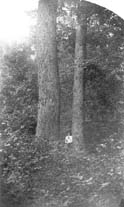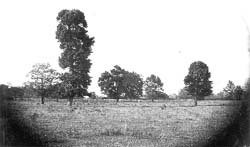
 |
The People and Forests sections describe Illinois forests from just before European settlement through the early 20th century.
Native Americans influenced the relationship of forest and prairie ecosystems in the state long before the arrival of European settlers. This section will describe how Native Americans used the forest as a source of food, medicines, and materials. Ridgway
photograph collection,
|
Early explorers and settlers kept diaries and notebooks and made the first maps of Illinois. First-hand accounts describe the land, water, forest environment, and events such as a bison hunt.
Surveyors measured the land of Illinois, including the forests, so they could make maps and establish boundaries for settlers buying land. Surveyors' notebooks are a rich source for the location of types of trees and other features of Illinois forests.
Later settlers used the forests as a resource for building materials, fuel, food, medicines, and wood for home furnishings. They also prevented the frequent prairie fires, which had lasting effects on the composition of the forests. They cleared many forested acres for farming. As more settlers arrived, a timber industry grew and the people harvested a great portion of Illinois' trees during the 1800s.
All of these topics are part of the
recent history of Illinois forests.
 |
| Ridgway
photograph collection,
(click on image to enlarge) Illinois State Museum collection |
|
|
Copyright © 2000 Illinois State Museum